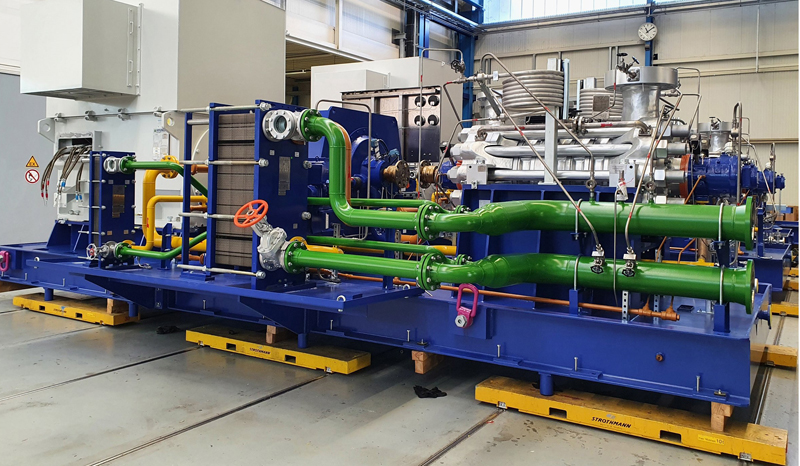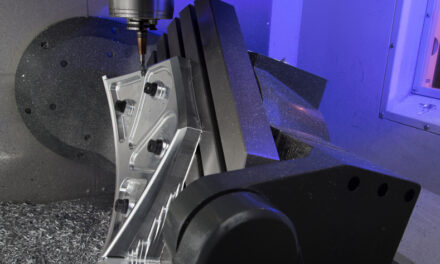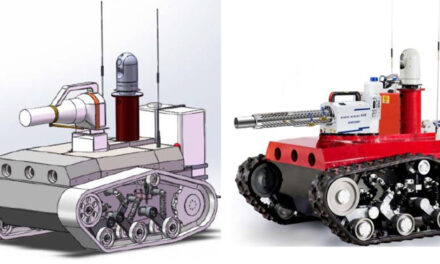Wherever fluids are treated, pumped, or mixed, Sulzer Management AG (Sulzer) based in Winterthur, Switzerland, acts as a global market leader in pumping solutions. The company’s flow equipment division specializes in pumping solutions specifically engineered for its customer’s processes. Sulzer relies on intensive research and development in fluid dynamics and advanced materials to create pumps, agitators, compressors, grinders, screens and filters. As a full range supplier, it offers customers solutions ranging from standard to full custom products. Sulzer employs 15,000 people in 180 production facilities and service centers around the globe and in 2020, their employees delivered revenues of 3.3 billion Swiss Francs (CHF).
Sulzer owes part of its growth to acquisitions. Consequently, design engineers in various locations have historically used several different brands of computer-aided design (CAD) and computer-aided manufacturing (CAM) software. – Our products come with a high level of customization, says Tobias Meier, head of product lifecycle management (PLM) transformation at Sulzer Flow Equipment and Services Division. To keep things manageable, we strive for a great degree of standardization and reusability.
In addition, reluctance to change well-established processes influenced user acceptance. – Many people continued to use the conventional way to store engineering data in separate file systems outside the PLM system, says Meier. The lack of digital visibility prevented us from weaving a digital thread and hampered common part usage. Separate data silos on different servers led to the team unknowingly recreated existing designs, resulting in elevated workload and a growth of item-related data in the company’s enterprise resource planning (ERP) systems.
CAD/CAM and PLM software unification
To change this situation, Sulzer decided to remodel its engineering software landscape for Flow Equipment and Services with a division-wide replacement of the legacy PLM Software.
NX software was already in wide use for CAD and CAM in Sulzer’s R&D and engineering departments. NX is part of the Xcelerator portfolio, the comprehensive and integrated portfolio of software and services from Siemens Digital Industries Software.
– It was easy to compare functionalities and user experiences between the various CAD and CAM software products, says Meier. Based on these, we decided to standardize NX wherever possible in our engineering departments around the globe.
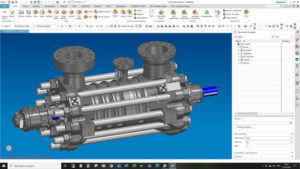 The decision-making process to select new PLM software and roll it out across the two divisions was not taken lightly. Several products were taken into consideration. Those that made it to the shortlist had to undergo extensive benchmarking. Finally, Sulzer decided to use the Teamcenter portfolio.
The decision-making process to select new PLM software and roll it out across the two divisions was not taken lightly. Several products were taken into consideration. Those that made it to the shortlist had to undergo extensive benchmarking. Finally, Sulzer decided to use the Teamcenter portfolio.
– We chose Teamcenter for its deep NX integration and smooth interfaces, which can interact with many other tools including a bidirectional interface with various brands of ERP software, says Meier. In addition to Teamcenter’s superior integration, the software’s functional possibilities were another decisive factor.
User acceptance is key
Those in charge of the conversion program knew user acceptance was a key success factor. Using PLM software such as Teamcenter can relieve engineers from many side tasks but requires some preparation and a change of habits.
Siemens suggested supporting the transition with an education program early in the definition phase to enable the success of Sulzer’s software unification. Sulzer considered on-site trainings or webinars less than practical for their global network of 650 Teamcenter users. Therefore, the company used Xcelerator Academy, Siemens’ comprehensive online platform for on-demand and instructor-led training. The platform provides structured learning plans with web-based training for all software in the Xcelerator portfolio via desktop computers and handheld devices.
Global user empowerment
Sulzer used this platform for its key user onboarding program. – Using Xcelerator Academy online training was a good way to create a unified training scheme, states Susanne Ahl, Development Engineer and PLM Key User, Sulzer Flow Equipment Division. To improve the learning experience, we asked Siemens to integrate examples representing real Sulzer use cases we created.
One of the challenges was embracing users with different cultural, language or age backgrounds and making sure the training experience was comfortable for everyone. 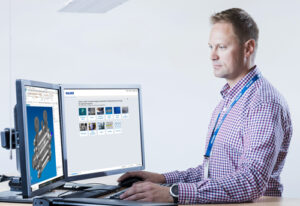 Additionally, Teamcenter was not fully implemented yet. At the time, not all details were known and it was impossible to transfer knowledge gained from Xcelerator Academy to the real working environment.
Additionally, Teamcenter was not fully implemented yet. At the time, not all details were known and it was impossible to transfer knowledge gained from Xcelerator Academy to the real working environment.
With only four months left until Teamcenter would go live, Sulzer worked with Siemens to jointly build a complete training solution heeding the credo of Jakob Sulzer (1782-1853), one of the founders of the company:
– Whatever you do, do it right. It will not cost you more time to do it well than to do it badly. Thus, the solution not only comes in a Sulzer-defined look-and-feel, but also took the various time zones involved into account. To establish a timely completion and the best possible user acceptance, Sulzer developed a go-live plan. This included short information sessions on the new software, live demos, a presentation of the web-based training and a well-structured first, second and third-level support regime.
While the web-based training solution covers NX workflows with standard content, it uses 85 different Sulzer-specific Teamcenter operations and procedures of various complexity. – Users learn as they are guided through each process step-by-step. This enables them to learn at their own speed while enjoying a unified empowerment experience, Ahl confirms. By using the Xcelerator Academy platform, we were able to prevent acceptance issues before they could even arise.
This prepared the engineers at Sulzer in the wake of Teamcenter implementation. – Webbased Xcelerator Academy training greatly accelerates onboarding new engineers as they join the company, adds Meier.

